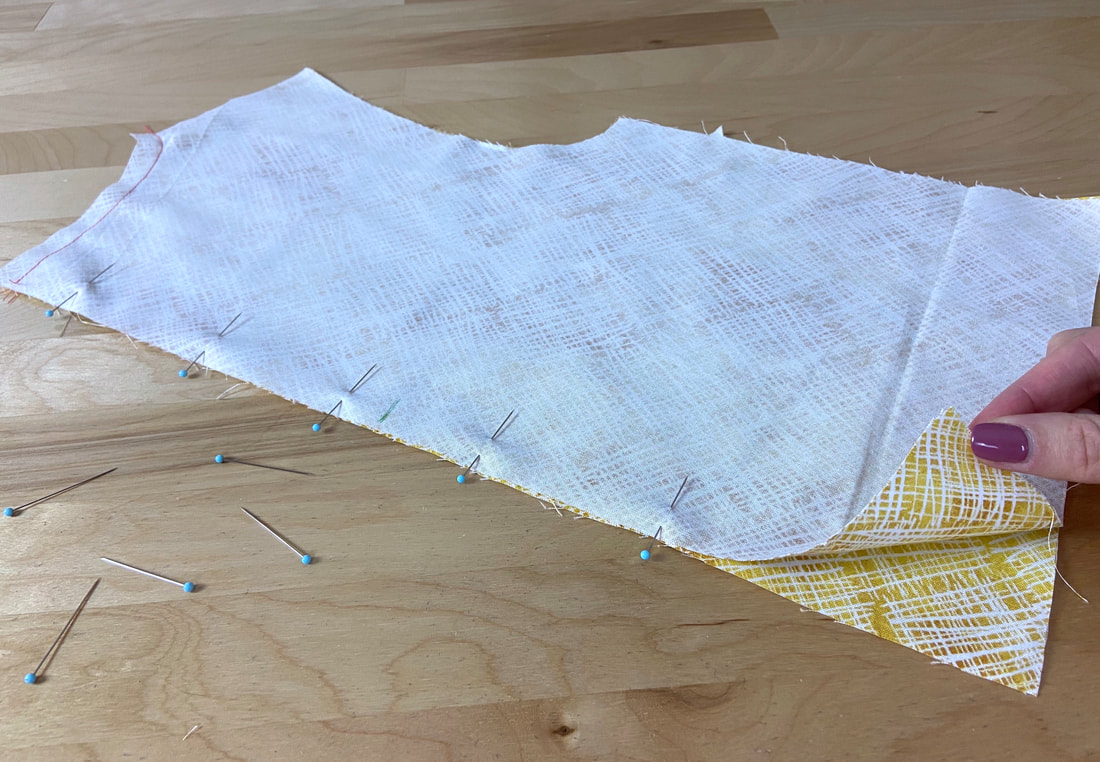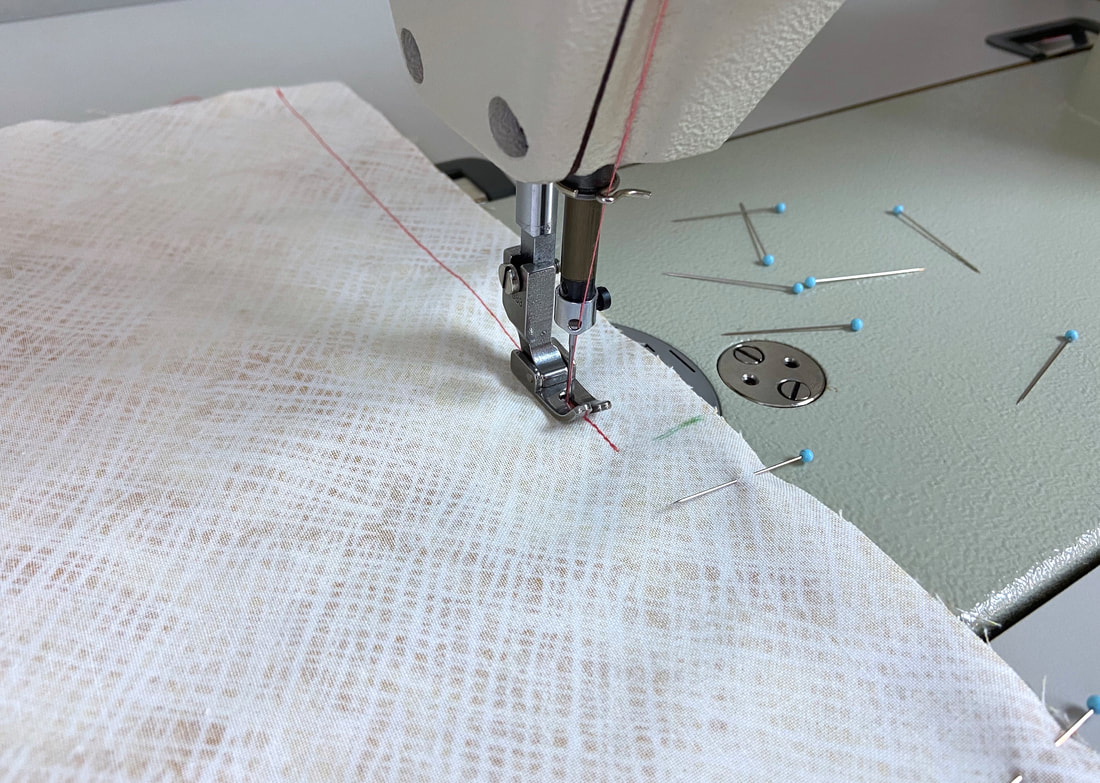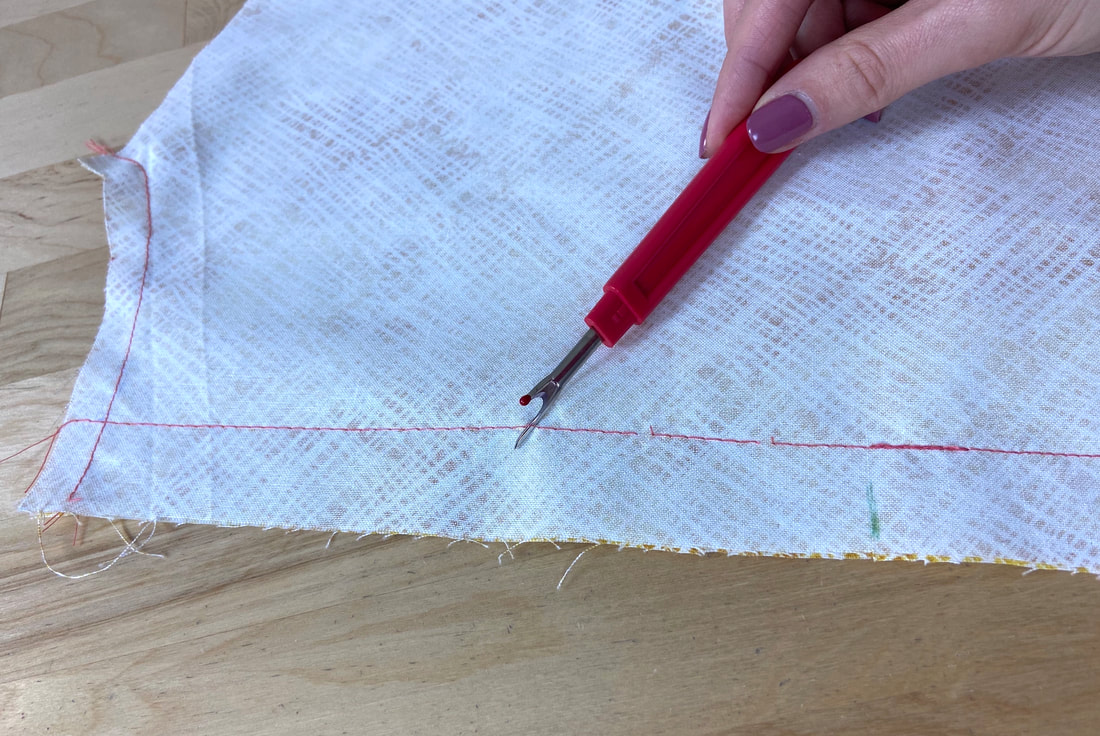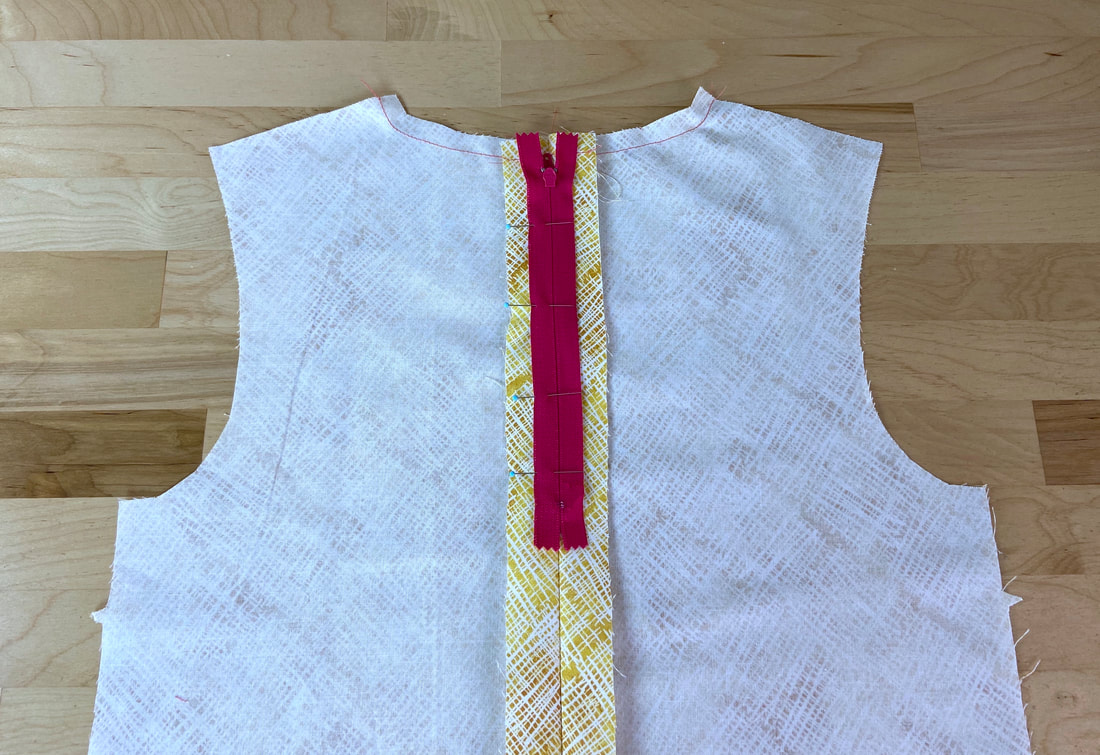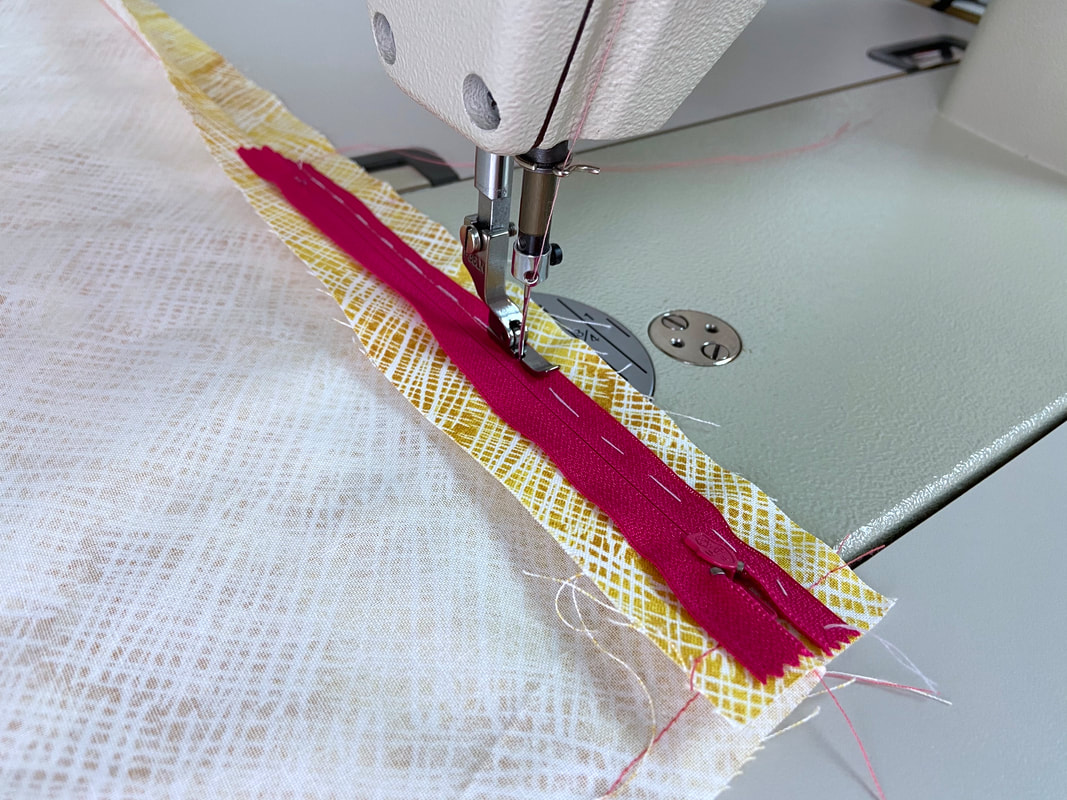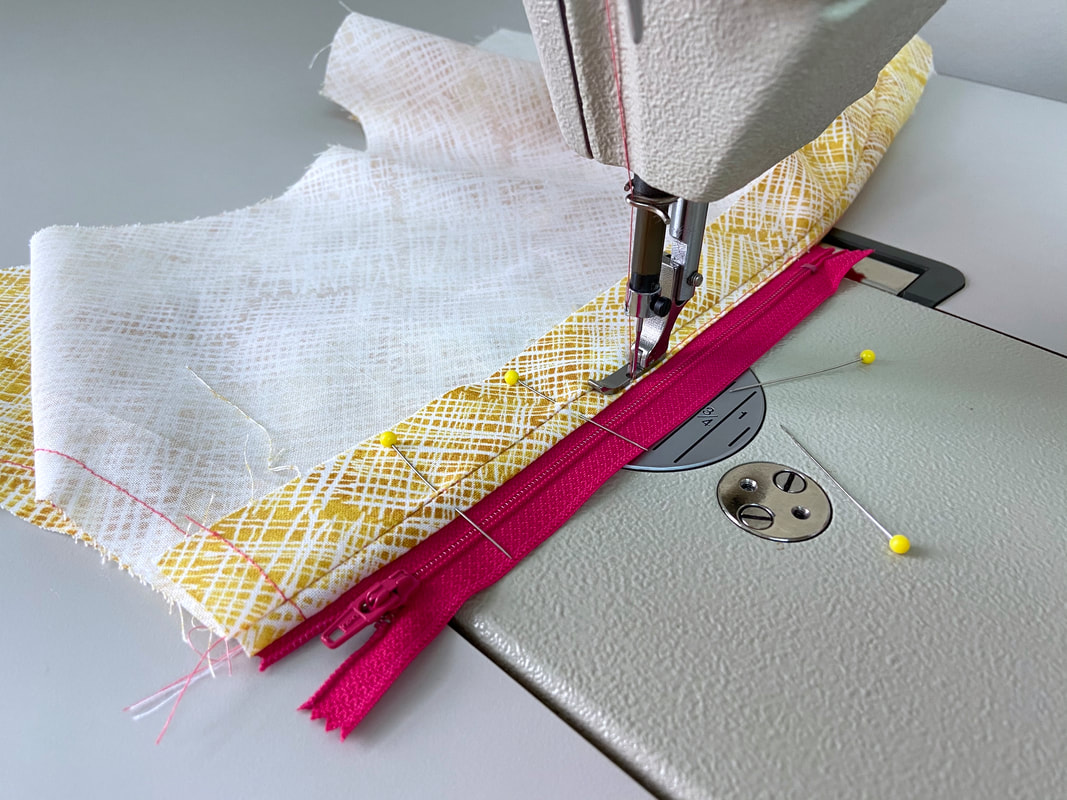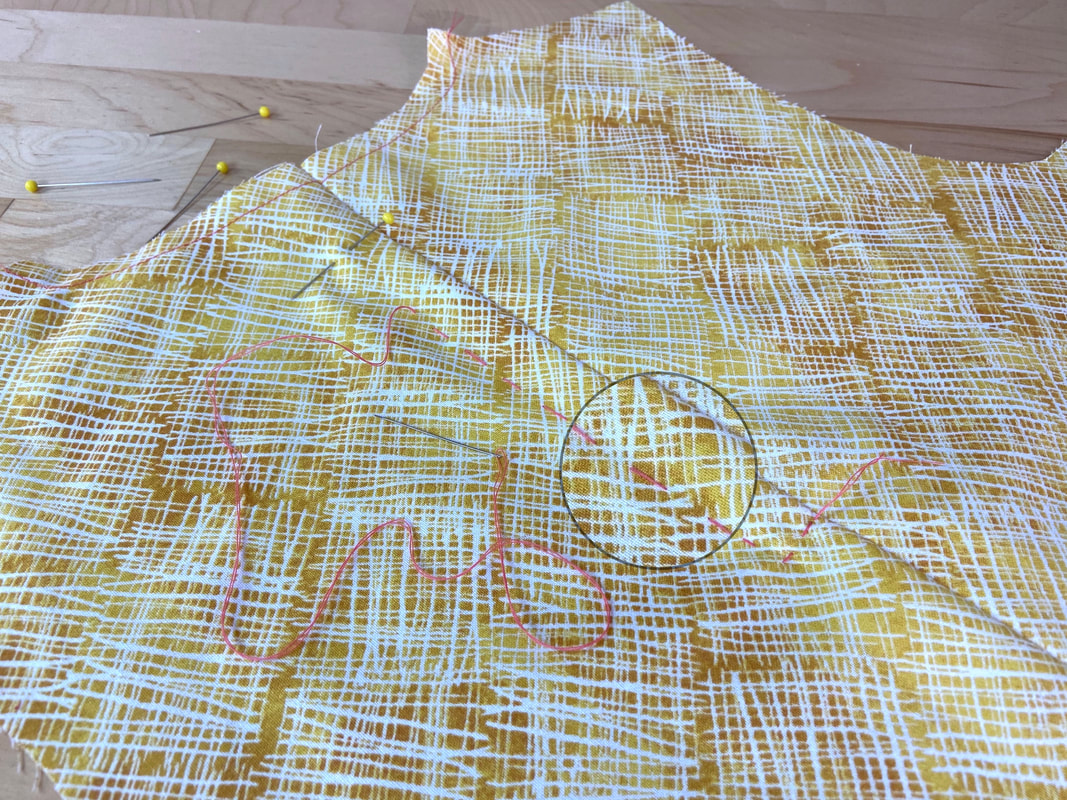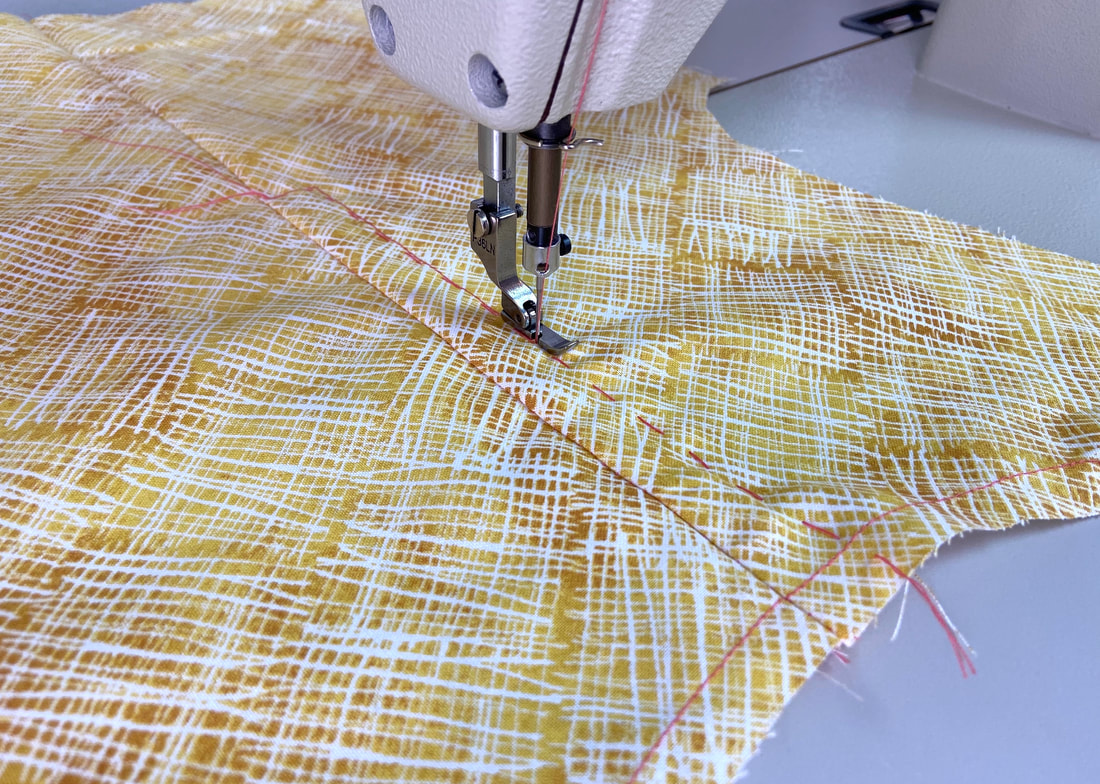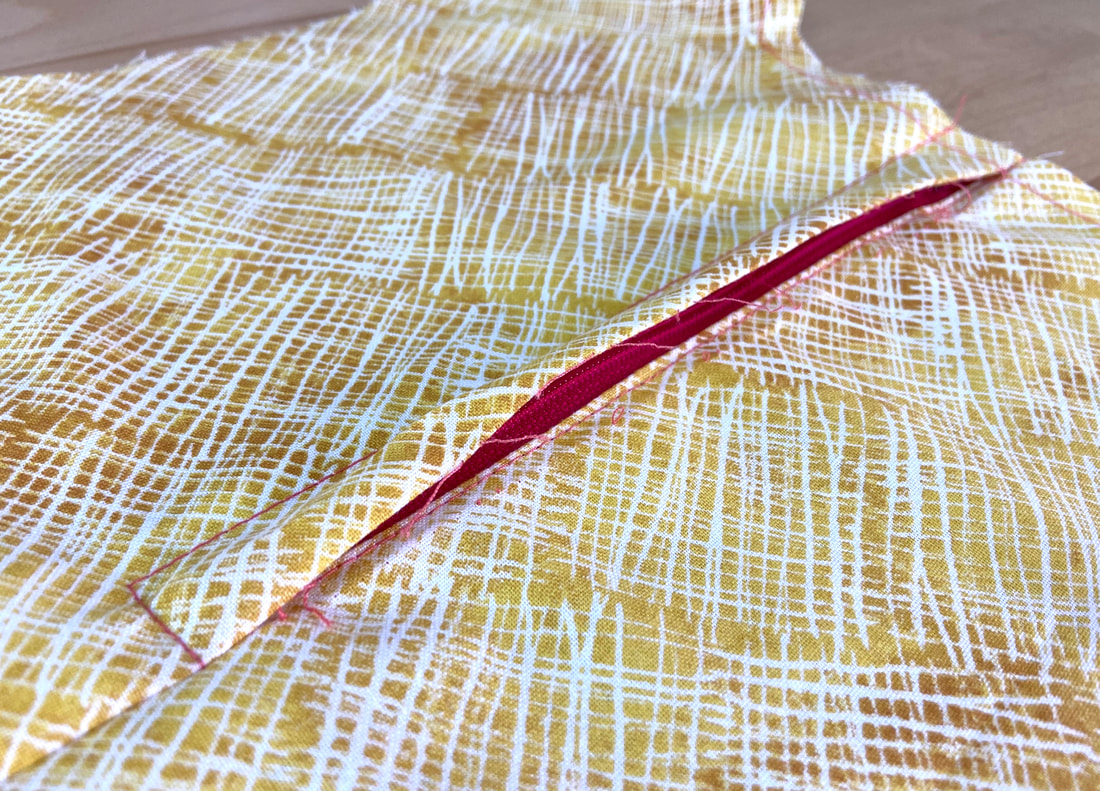Mini Tutorial: How To Sew A Lapped Zipper Application
1. If not provided on your patterns, measure the bottom of the closure using your zipper and mark this location with a quilting pencil or tailor's chalk directly on the wrong side of the fabric (within the seam allowance).
2. Align the seam edges housing the zipper with face sides touching and insert pins perpendicular to the edges to keep the layers aligned.
Starting from the bottom of the seam, begin stitching on a regular stitch setting following the designated seam allowance. Stop at the marked location (bottom of the zipper) and backstitch at this location to lock the threads.
Starting from the bottom of the seam, begin stitching on a regular stitch setting following the designated seam allowance. Stop at the marked location (bottom of the zipper) and backstitch at this location to lock the threads.
3. Switch your machine setting to the longest stitch available (machine basting) and continue stitching the seam edges together until you arrive at the very top. The machine basted portion should correspond with the zipper opening.
Using a seam ripper, clip every 5-6 threads from the top basted portion (above the backstitch) as shown above.
Using a seam ripper, clip every 5-6 threads from the top basted portion (above the backstitch) as shown above.
4. Open the seam allowance layers and gently press them flat with your hand- be careful not to accidentally pull the top basted portion apart.
Place the closed zipper face down, such that the zipper teeth fall directly on the seamline.
Insert pins perpendicularly through the left zipper tape and corresponding seam allowance layer underneath. It helps to use a hand basting stitch instead of pins to keep the zipper perfectly aligned during the machine stitching process.
Place the closed zipper face down, such that the zipper teeth fall directly on the seamline.
Insert pins perpendicularly through the left zipper tape and corresponding seam allowance layer underneath. It helps to use a hand basting stitch instead of pins to keep the zipper perfectly aligned during the machine stitching process.
5. Starting at the bottom, machine stitch down the center of the zipper tape and seam allowance layer underneath. It helps to move all garment layers out of the way during this process - you should only be stitching through the seam allowance.
6. Flip the zipper onto its right side and away from all garment layers. The seam allowance connected to the zipper should naturally fold under. Insert pins perpendicularly through the zipper tape and folded seam allowance as pictured above.
7. Starting at the bottom, topstitch the folded seam allowance edge and zipper tape underneath following the fold line as a guide.
8. Flip the seam on it right side and flatten the garment layers on both sides of the seam. Hand baste a placket guideline to the left of the seamline. This hand basting stitch should catch the zipper tape and all corresponding seam allowance layers underneath.
Given that it provides an exact guide for the final placket topstitch, the hand basting should be applied evenly throughout and placed at the same location as the final desired topstitch.
Given that it provides an exact guide for the final placket topstitch, the hand basting should be applied evenly throughout and placed at the same location as the final desired topstitch.
9. Starting from the bottom of the zipper opening, right at the seamline, topstitch horizontally away from the seam then pivot your stitch upward closely following the hand basted line. You should stitch right next to the hand basting but not directly on top of it as this will make it much easier to remove once the zipper placket is completed.
10. Once complete, remove all hand basting with a seam ripper and pull the zipper opening apart to release the machine basting applied in Step 3 above. Remove any loose threads that are caught within the seam edges.


